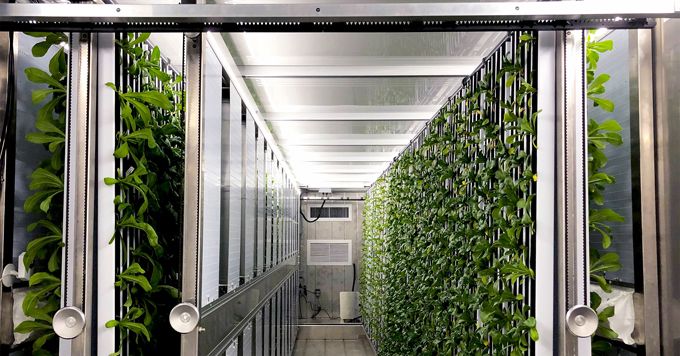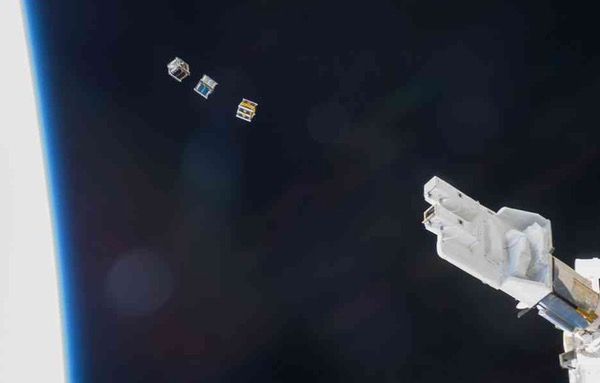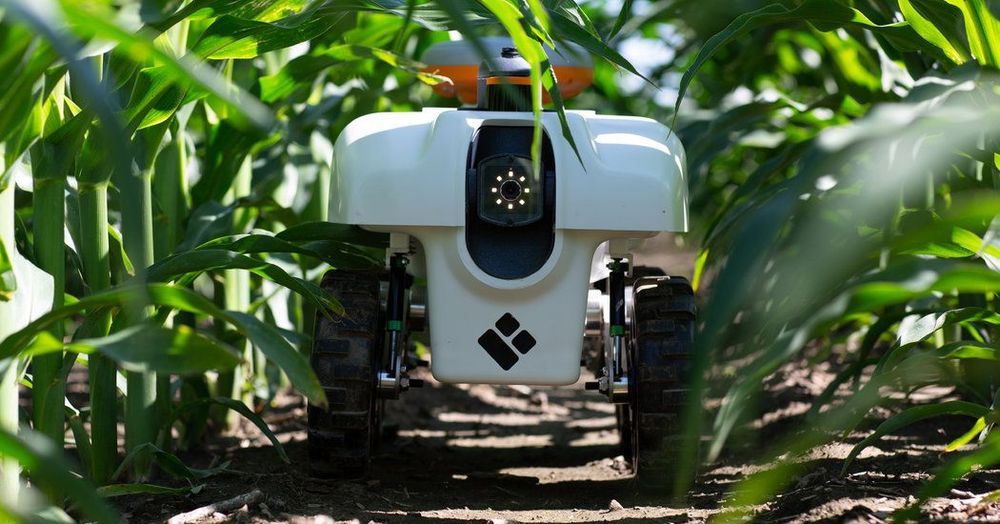The science behind turning your body into fertile soil.



“It’s a 320-square-foot shipping container like you would see on a boat, a train, a truck, outfitted with an automated growing system,” he says, “to grow about 3.5 acres worth of produce with no pesticides, no herbicides, and about 98.5% less water.” Inside the Greenery, plants grow vertically, with their roots in a nutrient solution instead of soil. Sensors, pumps, and LED lights automatically maintain ideal growing conditions, so you don’t have to be an expert to start farming. “You plug it in and you’re growing same day,” McNamara says.
The crops grow vertically under LED lights.
Steven Hawking: “I don’t think we will survive another thousand years without escaping beyond our fragile planet.”
Probably the most notable direct result of space exploration is satellites. Once we could position a ship in orbit and take telemetry, we knew we could place unmanned pieces of equipment there and just let it orbit, running on its own, while receiving orders from the ground. From those satellites, we have created a global communication system and the global positioning system (GPS) that powers most of our communications capabilities today. What can bring peace and harmony on the planet more than our ability to communicate with each other beyond geographic and political boundaries? These technologies have been enhancing and saving for years.
Thanks to orbital technologies, we could explore the surrounding universe through orbital telescopes and the International Space Station (ISS). We have been studying the universe through lenses unhindered by the atmosphere. We’ve sent drones to explore the moon, Mars and other astral bodies in our solar system. Just like in the early space race, our engineers found yet more solutions that will improve our Earthly lives.
That is the legacy of space exploration. In 2019, NASA only received 0.49% of the American federal budget to do what it does best. A small amount of tax dollars for a huge return over generations. It’s just not that obvious to most people.

Emergent technologies have made our world more efficient, engaging, and accessible. We’ve witnessed how innovations like artificial intelligence (AI) have transformed from largely an insider trend of the leading edge of the tech industry into more commercially viable devices, such as Amazon Echo, Siri, and on-demand machine learning from AWS. There tools have democratized the way we interact with the world.
In addition to AI, other innovative technologies have helped democratize many markets across the globe. However, the sector with, perhaps, the most notable impact in democratizing technology lies in industries that go beyond our planet.
The NewSpace industry—now comprised of startups, developing countries, and universities—is leading a movement of tech innovations that are helping to pave the way for the new space explorers. This new era not only focuses on lowering the barriers of entry for investors and companies, but it’s also fostering more sustainable, consumer-friendly models that promote better access to the final frontier.

It seems like there’s nothing Elon Musk can’t do.
As CEO of SpaceX and Tesla, founder of The Boring Company, and cofounder of OpenAI and Neuralink, Musk seems to be everywhere all at once, pushing all kinds of futuristic technologies. He’s said he won’t be happy until we’ve escaped Earth and colonized Mars.
Between space rockets, electric cars, solar batteries, and the billions he’s made along the way, Musk is basically a real-life Tony Stark — which is why he served as an inspiration for Marvel’s 2008 “Iron Man” film.
PepsiCo’s Senior VP of R&D, Dr. Ellen de Brabander, joins me on this ideaXme (http://radioideaxme.com/) episode to talk about running the R&D engine for a $200 billion company, the parallels between pharma and food in terms of increasing customization / personalization, and her future visions for the $8 trillion global food and beverage space — (Personal caveat — While I avoid processed foods, one cannot ignore the place at the table that “big food” will have in crafting and investing in the future of health, wellness, and longevity) — https://www.youtube.com/watch?v=tDSiVlKNnRA&t=1 #Ideaxme #Pepsi #Nutrition #Research #Science #Health #Wellness #Sustainablity #Longevity #FritoLay #Tropicana #QuakerOats #Gatorade #Aquafina #MountainDew #Doritos #Cheetos #Ruffles #Tostitos #Fritos #Biotech #LifeExtension #Aging #IraPastor #Bioquark #Regenerage
Ira Pastor, ideaXme exponential health ambassador, interviews Dr. Ellen de Brabander, Senior Vice President Research and Development at PepsiCo.
Ira Pastor Comments:
Today we are going to segue into the food industry, which is a fascinatingly complex and diverse set of businesses that supplies most of the food consumed by the global population.
In 2020, food, needless to say, is much more than just calories.
Now more than ever, we need pioneering solutions and technologies that can change the world. We’re looking for innovators, grassroots organisations, sustainable projects and ideas from every corner of the world.
Are you ready to make your mark? Submissions for the #ZayedSustainabilityPrize 2021 cycle are now open: http://bit.ly/zayedsustainabilityprize_2021
Tesla vehicles are now confirmed to be used in Elon Musk’s Boring Company Loop project to create an electric people mover at Las Vegas’ massive convention center.
You can watch them break through the first tunnel in real time.
Last year, we reported on the Boring Company announcing a new proposed “Loop” system of tunnels for approval in Las Vegas.


Next week, the European Space Agency is going to jettison a cubesat called Qarman from the International Space Station and watch it burst into a fireball as it reenters Earth’s atmosphere—all on purpose.
What’s the mission: Qarman (short for “QubeSat for Aerothermodynamic Research and Measurements on Ablation”) is a shoebox-sized experiment meant to help researchers better understand the physics at play when objects plummet into the planet’s atmosphere and burn up. Qarman was brought up to the ISS in December during a cargo resupply mission. On February 17, it will be cast back out into space and begin slowly drifting toward Earth before entering the atmosphere and burning up in about six months.
Tell me more: Qarman has four solar-cell-covered panels that are designed to increase atmospheric drag and hasten reentry. Its nose is made from a special kind of cork that’s typically used in thermal protection systems on spacecraft. Ground testing shows that when the cork heats up, it chars and flakes away a bit at a time. The Qarman team is interested in learning how this process works during reentry.